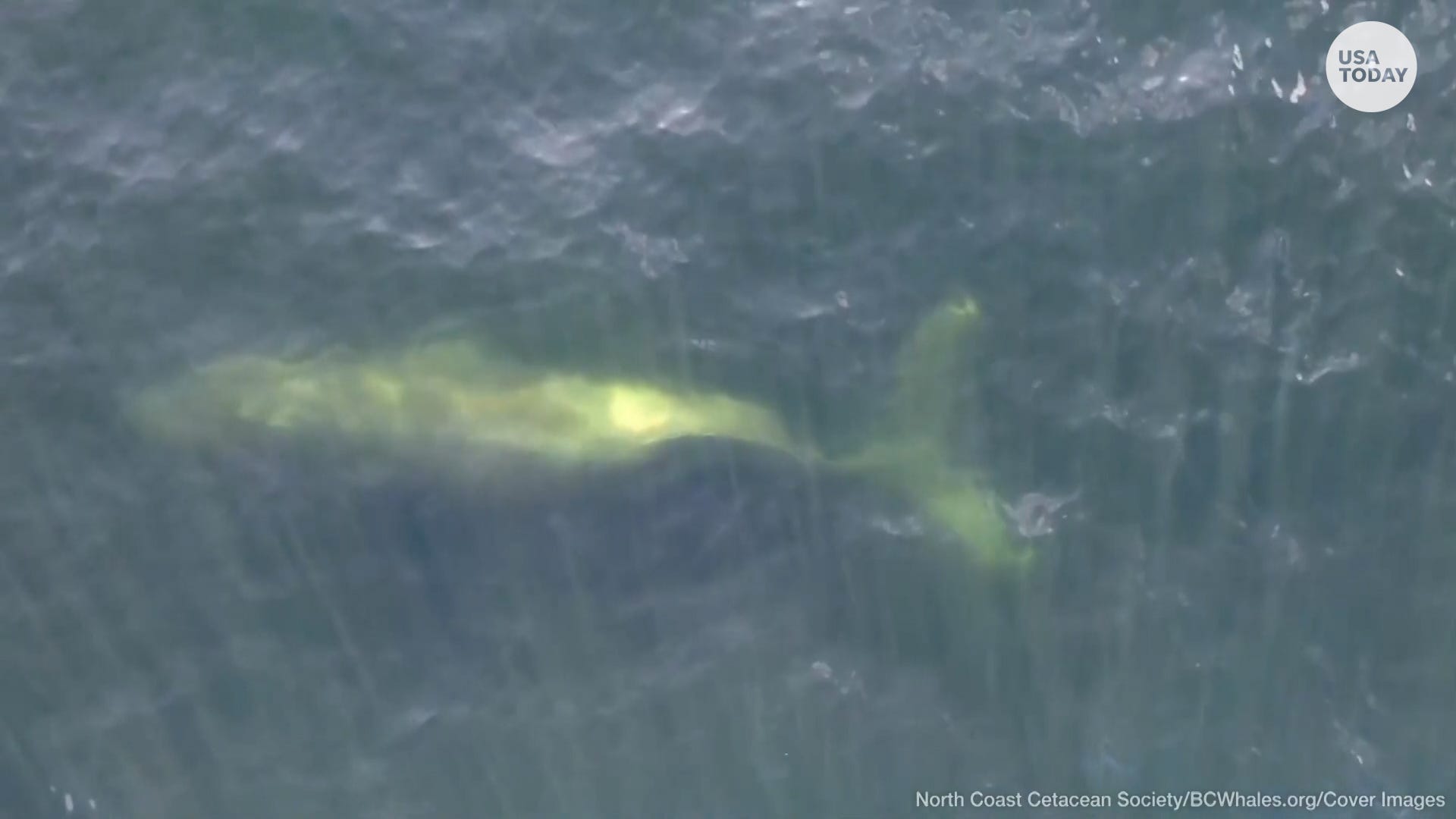
- Whale watching season runs from November through April in Hawaii, typically peaking between January and March.
- It’s easy to spot whales for free right from shore from Maui, Oahu and Kauai.
- It’s important to do your research and pick a sustainable tour company that respects the animals and laws.
HONOLULU — It was only about 20 minutes since our catamaran launched from Oahu’s Waianae Boat Harbor and we were already in the presence of humpback whales.
The captain of the boat, Captain Florence “Flow” Conin , turned off the boat because federal law states that no one, from boaters to swimmers, can go within 100 yards of a humpback whale for their safety. We we’re going to “enjoy them from a distance,” she said. (It’s not uncommon for whales to approach boats based on their own comfort levels.) One crew member dipped a hydrophone below the water to see if she could pick up on any singing – indicating if they were males.
Suddenly, just a few feet from the boat, a humpback whale’s dark dorsal fin rose out of the water with its back arched over the surface – how the species earned its name of “humpback.” As the whale dove down, its fluke (or tail) lifted into the air. On the other side of our boat, another whale exhaled a huge plume of spray from its blowhole.
“That was insane,” Captain Flow said, affirming everyone’s expressions. “That was a once-in-a-lifetime type of thing.”
This was on a tour run by Wild Side Specialty Tours, a women-owned sustainable tour company that leads intimate marine wildlife excursions around Oahu’s west coastline. This morning, we’re looking for some humpback whales.
In Hawaiian culture, whales (or kohalā) hold significance in myriad ways. They are connected to Hawaiian people as their ʻaumākua, or deified ancestors who appear in the form of animals and act as spiritual guidance. Whales are also linked to Kanaloa, the god of the sea and voyaging.
When is whale season in Hawaii?
I took the charter early December when the whales were just beginning to trickle in from their 3,000-mile-long journey from Alaska to Hawaii’s warm waters to mate.
Every year, the humpbacks arrive at a different time – it’s up to multiple factors, such as the weather in Alaska – but it’s generally from November through April. By January and through March, it’s peak whale season, and in the islands, you can easily spot one of these gentle giants by land, sea or air.
This year, about 17,000 humpbacks are estimated to visit Hawaii, a significant increase over the last century, thanks to global and local conservation efforts, according to Jessica Colla, Director of Education at Maui Ocean Center.
Where are the best places to see whales in Hawaii from shore?
There are plenty of places to spot these majestic creatures – for free – right from land, especially on Maui, Kauai and Oahu. Just grab some binoculars and sunscreen and head towards the shore.
The majority of humpbacks will stay around Maui’s calmer, shallower water, which is ideal for moms and their calves, according to Conner Humann, a certified humpback whale naturalist and a crew member in the charter, making it the best island for whale-watching.
Here are some of the best places on Maui to look for humpbacks, according to Colla:
- Kamaole 3 Beach Park in South Kihei is an elevated grassy field that looks over the shoreline.
- Seascape Restaurant at Maui Ocean Center offers a front-row ticket to humpbacks as it sits right on the harbor and even provides binoculars for diners.
- Kaanapali Beach on the west side of the island is a renowned beach for people to enjoy recreational activities like snorkeling or cliff jumping, but spotting humpbacks is pretty common as well.
- Papawai “Pali” Lookout on Honoapiilani Highway between Maalaea and Lahaina, where you can pull off and watch whales from the cliff.
On Oahu, some popular locations include the west side of the island, along the Waianae coast at beaches like snorkeling and diving hotspot Electric Beach, and the North Shore, like Sunset Beach, Humann said. Pick a spot on the sand and look out to sea.
The best place on Oahu to find whales is Makapuu Lighthouse Trail, a mellow, paved trail that’s good for hikers of different levels and ages. The hike offers one of the best vantage points on the island and along the trail, there are multiple lookouts with tower viewers to scan the ocean. On a clear Sunday afternoon in late December, people gathered at one of the hike’s lookouts to watch two calves breaching out of the water and slapping their pecs.
Hula was once banned in Hawaii: This competition fosters the next generation of dancers
Can you eat history?: This Maui hotel gardener uses plants to educate guests on Maui’s culture.
Kauai’s deep water is favored by teens and adults, Humann said, and whales can be seen from all sides of the island. On the south shore, check out the crescent-shaped Poipu Beach, one of the most popular beaches on the island for snorkeling and swimming. On the island’s northernmost tip, there’s Kilauea Point Lighthouse, where wild birds can also be spotted. There’s an entrance fee of $10 for those 16 and older.
What are the best whale-watching tips?
Humpbacks are large whales, roughly the size of a yellow school bus. “They are also one of the most ‘surface active’ large whales – meaning they spend a lot of time at the surface instead of below it,” Colla said. “This means there are more easily visible from afar, especially compared to other large whales.”
For the most part, when whale watching, you’re scanning the ocean and looking for “anything out of the ordinary,” Captain Flow said. One thing to keep an eye out for is a sheen on the water, indicating that an animal may be present.
Whales mainly travel solo but also temporarily with social groups, and especially with a mother and her calf. In Hawaii, you may spot a group of whales because of mating behaviors.
No car, no problem: Save on your Hawaii vacation by booking cheaper, more sustainable options to a rental car
Explore Kauai: 8 free or cheap things to do in Kauai, Hawaii, that are enriching in other ways
As for when to head out for whale-watching, luckily, there’s no rigid timeframe. “Humpback whales have a similar sleep schedule to humans; active during the day and rest at night,” Colla said. “Because of this, active whales can been seen at any time of the day.” However, the wind tends to be lowest in the morning so the ocean will be calmest, making it easier on the eyes.




